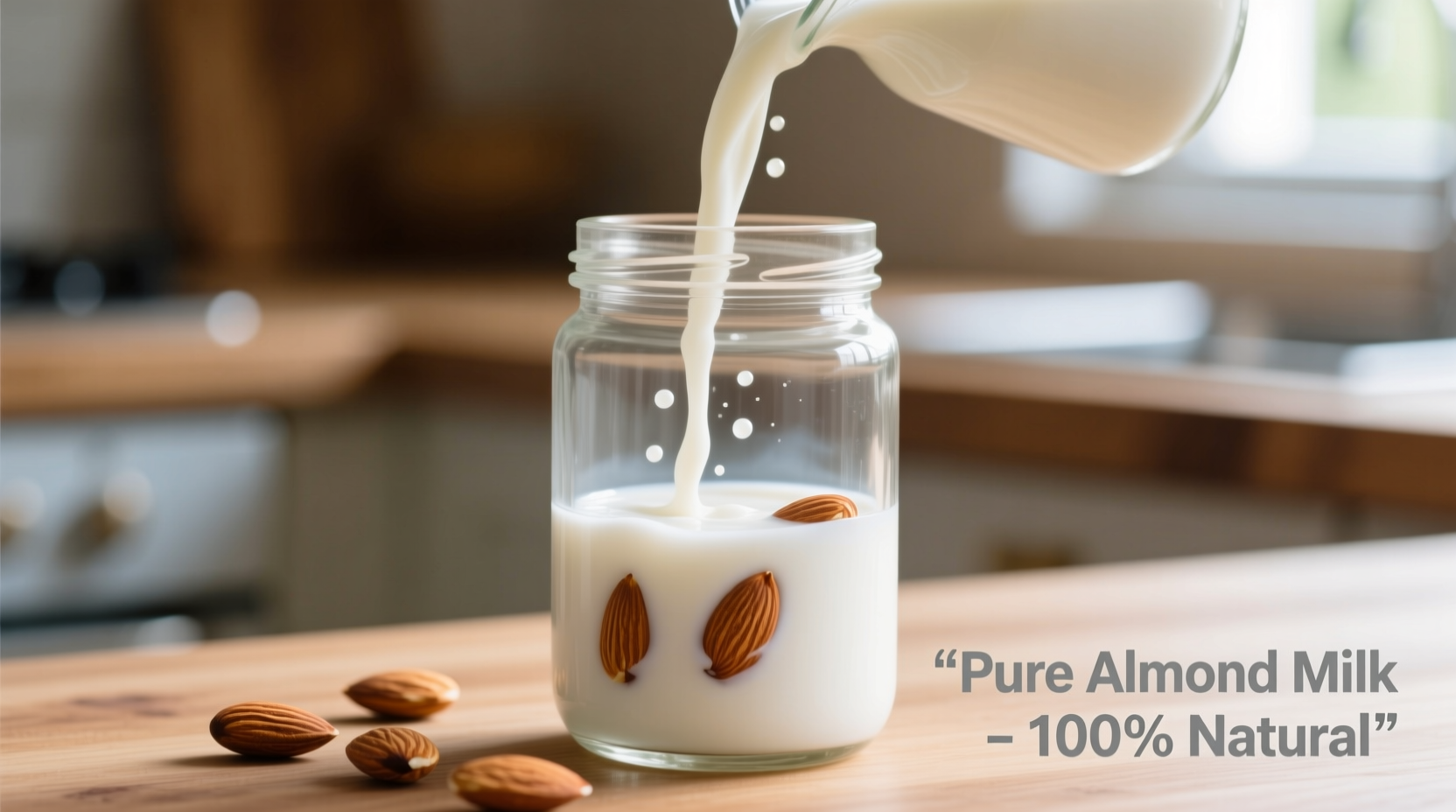Curious about what almond milk tastes like before trying it? You're not alone. Millions of consumers exploring dairy alternatives want to know exactly what to expect from this popular plant-based beverage. Whether you're lactose intolerant, vegan, or simply health-conscious, understanding almond milk's flavor profile helps you make informed choices for your morning coffee, smoothies, or cereal.
The Essential Almond Milk Flavor Profile
Almond milk delivers a delicate balance of flavors that distinguishes it from both dairy and other plant-based alternatives. The base flavor resembles very mild almonds—think of the subtle nuttiness in almond extract rather than whole almonds. Most commercial varieties contain added sweeteners and thickeners that create a slightly sweet, smooth drinking experience.
Key characteristics include:
- Nutty undertones - A gentle roasted almond essence
- Light sweetness - Naturally occurring sugars plus optional added sweeteners
- Clean finish - Minimal aftertaste compared to soy or oat milks
- Subtle creaminess - Achieved through emulsifiers in commercial products
- Slightly watery mouthfeel - Less dense than dairy milk
How Processing Affects Almond Milk Taste
The taste experience varies significantly based on production methods. According to research published in the Journal of Food Science, commercial almond milk typically contains only 2-3% almonds, with the remainder being water and additives. This low almond content explains why many people don't detect strong almond flavor.
Consider these processing factors:
- Homemade vs store-bought - Homemade versions taste more distinctly of almonds but can be gritty
- Sweetened varieties - Contain added sugars or vanilla that mask nuttiness
- Unsweetened versions - Reveal the true mild almond flavor with subtle earthiness
- Fortification - Added calcium and vitamins sometimes create slight chalkiness
| Milk Type | Flavor Profile | Sweetness Level | Texture |
|---|---|---|---|
| Almond Milk (unsweetened) | Mild nutty, slightly earthy | Low | Light, slightly watery |
| Dairy Milk | Creamy, slightly sweet | Natural lactose | Rich, smooth |
| Oat Milk | Oat cereal-like, mildly sweet | Medium | Creamy, thicker |
| Soy Milk | Bean-like, sometimes beany | Variable | Moderately creamy |
Real-World Taste Comparisons
When evaluating what does almond milk taste like in practical applications, sensory testing reveals important insights. A 2023 consumer study by the Academy of Nutrition and Dietetics found that 68% of first-time users described unsweetened almond milk as "milder than expected" with only subtle nuttiness.
Here's how almond milk performs in common uses:
- In coffee - Blends well without curdling, adds slight nuttiness to dark roasts
- With cereal - Works best with lighter cereals; may overpower delicate flavors
- In smoothies - Creates lighter texture than dairy but less creamy than coconut milk
- Baking applications - Requires recipe adjustments due to lower fat content
When Almond Milk Shines (and When It Doesn't)
Understanding almond milk's flavor limitations helps you use it effectively. Food science research shows that almond milk performs best in applications where its light flavor won't dominate.
Best applications:
- Smoothies with strong fruit flavors (berries, tropical fruits)
- Light-colored sauces and soups
- Cold beverages where subtle nuttiness complements other ingredients
- Recipes where dairy flavor would overpower (like delicate pastries)
Limited applications:
- Creamy pasta sauces (lacks fat content for proper emulsification)
- Heavy chocolate desserts (flavor competes with cocoa)
- Recipes requiring Maillard browning reactions
- Whipped cream substitutes (insufficient fat content)
Improving Your Almond Milk Experience
Professional chefs recommend several techniques to enhance almond milk's flavor profile. As Antonio Rodriguez explains, "The key is understanding almond milk's chemistry—its low fat content means it won't behave like dairy, but its neutral pH makes it incredibly versatile when used appropriately."
Try these practical tips:
- Chill thoroughly - Cold temperatures mute any potential off-flavors
- Shake well before use - Prevents separation that affects mouthfeel
- Add a pinch of salt - Enhances natural sweetness in unsweetened varieties
- Warm gently - Never boil, which can create bitter notes

Addressing Common Taste Misconceptions
Many people wonder: does almond milk taste like almonds? The reality is more nuanced. While made from almonds, commercial processing removes much of the characteristic almond flavor. USDA FoodData Central analysis shows that the almond content in most store-bought varieties ranges from 2-14%, explaining the subtle nuttiness.
Other misconceptions include:
- "It tastes artificial" - Most detectable flavors come from natural almond compounds
- "All brands taste the same" - Significant variations exist between brands and formulations
- "It's supposed to be sweet" - Unsweetened versions have minimal natural sweetness
Choosing the Right Almond Milk for Your Palate
Your taste preferences should guide your selection. Those new to plant milks might prefer sweetened vanilla varieties, while health-conscious consumers often choose unsweetened plain options. For coffee lovers, barista editions with added fats create better microfoam.
When evaluating what does unsweetened almond milk taste like specifically, expect:
- Noticeable but mild nuttiness
- Very subtle natural sweetness (about 1g sugar per cup)
- Potential mineral notes from fortification
- Clean finish without lingering aftertaste











 浙公网安备
33010002000092号
浙公网安备
33010002000092号 浙B2-20120091-4
浙B2-20120091-4